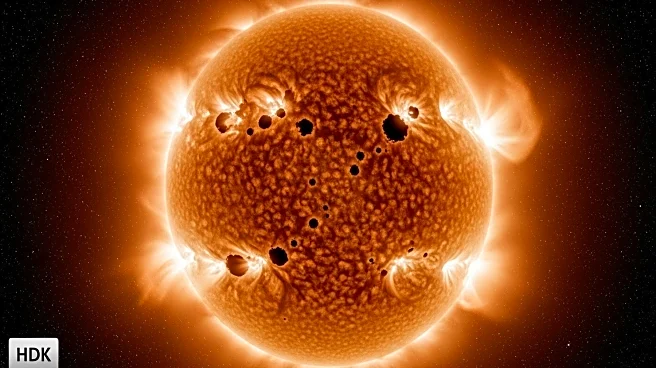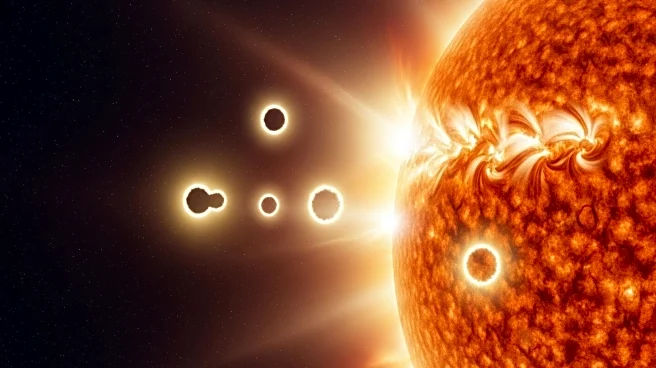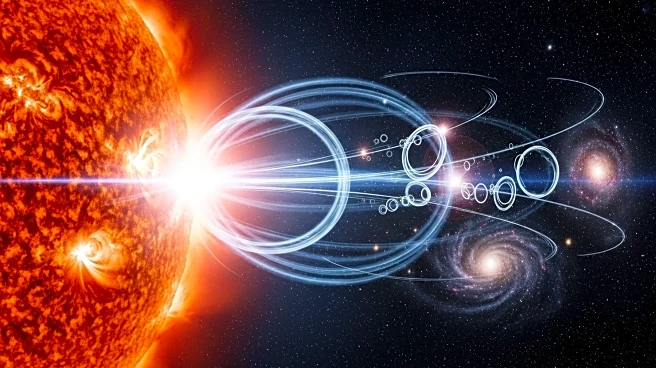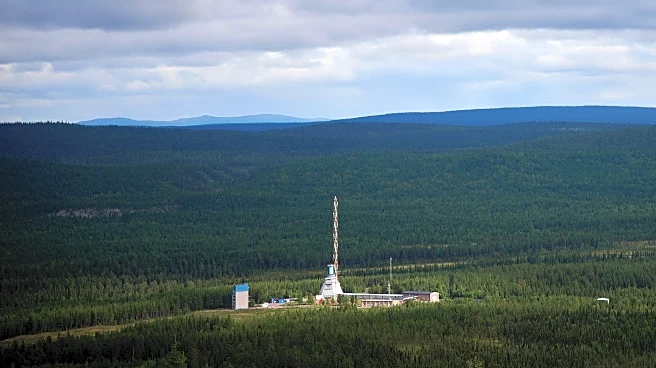What's Happening?
Sunspots are dark regions on the solar disc, cooler than the surrounding areas, and can vary significantly in size. The Maunder Minimum refers to a period from 1645 to 1715 when sunspot activity was nearly nonexistent, named after astronomer Edward Walter Maunder. This period coincided with the 'Little Ice Age,' a time of cooler climate conditions in Europe. Sunspots generally follow an 11-year cycle, but this can vary. Current research continues to explore the connection between solar activity and Earth's climate, with sunspot numbers being tracked and analyzed by organizations like NOAA and NASA.
Why It's Important?
Understanding sunspot activity is crucial for predicting solar cycles and their potential impact on Earth's climate. The Maunder Minimum serves as a historical example of how reduced solar activity can lead to significant climate changes. This research is vital for preparing for possible future periods of solar inactivity, which could affect global temperatures and weather patterns. It also informs climate models and helps in assessing the potential risks of climate shifts.
What's Next?
Ongoing observations by NASA's Parker Solar Probe and ESA's Solar Orbiter aim to provide deeper insights into solar processes and sunspot cycles. These studies may lead to improved predictions of solar activity and its effects on climate. Scientists will continue to monitor sunspot numbers and analyze their implications for future climate scenarios.
Beyond the Headlines
The study of sunspots and solar cycles highlights the complex interplay between solar activity and Earth's climate. It raises questions about the long-term impacts of solar variability and the need for comprehensive climate strategies to address potential changes. This research also contributes to broader discussions on climate resilience and adaptation.












